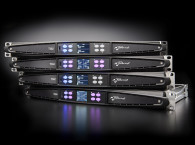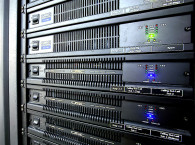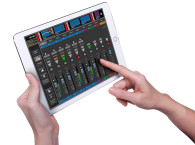
Following unprecedented demand from the professional audio industry for the provision of credible and reliable market research, market research firm Futuresource Consulting has applied its unique methodology and research capabilities to release the first in its series of Professional Audio reports with the Professional Loudspeaker Market Assessment. For the first time, the new study maps the entire professional loudspeaker supply chain, including the leading vendors, integrators, distributors and component manufacturers, to put a realistic stake in the ground to a somewhat unchartered territory.
This first report focusing on the Professional Loudspeaker market, covers the spectrum of professional products from touring & rental to voice evacuation speakers. Futuresource has divided the Pro Loudspeaker market into 7 product categories - Point Source Cabinets; Line Array; Compact Systems; Column Arrays; Studio Monitors; Flush Mount, Special & Utility; and Cinema Sound - and 5 main applications each with several sub verticals - Touring & Rental; Portable Sound; Installed Leisure; Installed Commercial; and Cinema Sound. The ambition is to develop this report into a regular service.
"The times are changing for the pro loudspeaker industry, with a range of challenges that will test manufacturers and ultimately open up new opportunities across the entire landscape," says Chris McIntyre-Brown, Associate Director at Futuresource Consulting. "In this maturing market, it's no longer just about being in the right place at the right time. Brands are placing a greater emphasis on data analytics and research to identify growth opportunities."
The importance of data and strategy has been amplified by private investment acquisitions made by the likes of Ardian (for d&b Audiotechnik) and Transom Capital Group (for Loud Technologies, which includes Mackie, Ampeg, EAW and Martin Audio brands), and Samsung's acquisition of Harman.
"With access to growth capital and greater commercialization, watch out for strategies built around integrated, sustained campaigns which achieve KPIs, yet maintain brand integrity," says McIntyre-Brown. "It's a balancing act that needs to preserve the hard-earned customer relationships, which have traditionally been critical to success."

Installed leisure and installed commercial verticals lead the way for market development, continuing to post healthy growth out to 2021 and beyond. Although the installed leisure segment provides higher value projects, the number of opportunities in the installed commercial segment is far greater.
Touring brands are beginning to target the installed leisure segment, opening up new opportunities for growth as customers begin to place a greater emphasis on the quality of the loudspeakers installed.
In the installed commercial segment, there is a sub-segment emerging that is placing increased importance on sound quality, leading to higher value installs being completed. Examples include retailers creating an immersive customer experience and improved intelligibility in public transport.

In the touring market, a sub-segment of the rental vertical, changes in the music industry have repositioned concerts as the key revenue source for artists and record companies. As a result, costs have come under the microscope to maximize revenue. Combine that with significant growth in the use of visual effects to improve the audience experience and audio is taking a direct hit. Even where overall budgets aren't experiencing downward pressure, audio is taking a reduced proportion, squeezing margins for rental companies.
Changing consumer behavior is also impacting on the pro loudspeaker market, both positively and negatively. "As consumers place more importance on the live music experience, the demand for concerts, festivals and music events continues to climb," says McIntyre-Brown. "More events means more demand for equipment. And although these higher expectations have led to visual effects being used to enhance the show at the expense of audio, there could be future opportunities for new audio solutions in the installed leisure segment.
"In addition, online shopping has reshaped the high street, with stores reducing spend or closing down altogether, but some retailers are looking to entice customers back by creating an improved experience, with audio playing a key role in their planning."
Looking to the regions, AsiaPac is the fastest growing market. By the end of 2017 it will overtake the EMEA region to become the second largest market after the Americas, and Futuresource research shows that it will be worth $1.3 billion by 2021. EMEA is the slowest growing market, but still continues to expand with continued growth out to 2021.
"Moving forward, the brands that will succeed will be those who reinvent themselves as end-to-end solution providers," says McIntyre-Brown. "When it comes to installation, being able to offer a complete system which includes amplifiers, microphones, networking, zoning systems and security systems could be the difference between winning and losing. Bosch is already successfully doing this and Harman is well placed to do the same.
"The portable sound market, where compact systems are a growth product, also holds great opportunities for a consolidated offering, as does the touring market, where matching up speakers, amplifiers and digital signal processing devices is a core requirement."
"Watch out for the brands that can build relationships and form partnerships, either from a product or channel perspective. These will be the ones that survive and thrive in the new audio environment, where software integration, networking, sound monitoring and production tools all converge upon the pro loudspeaker ecosystem."
www.futuresource-consulting.com






